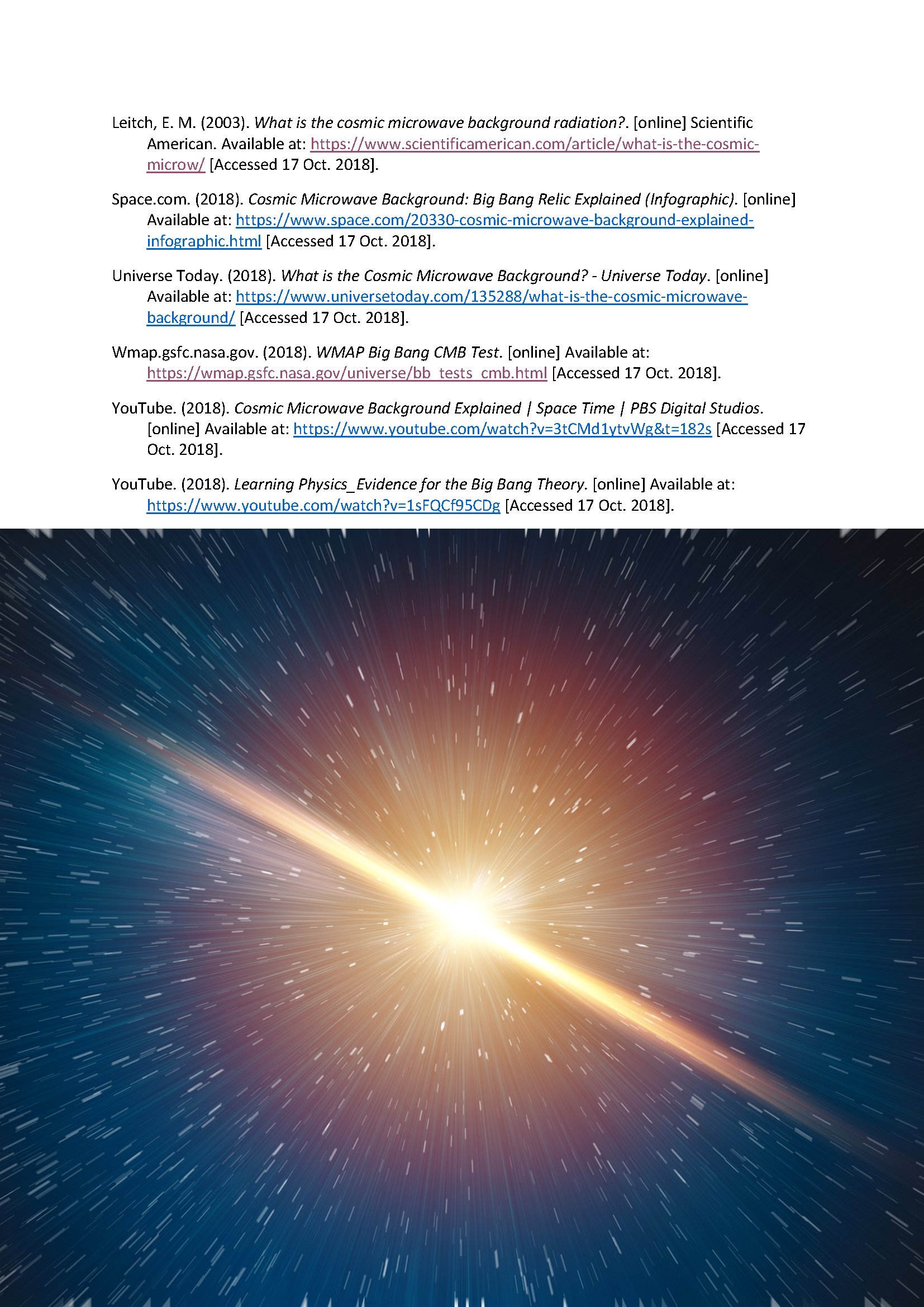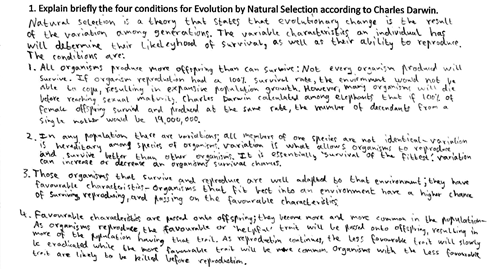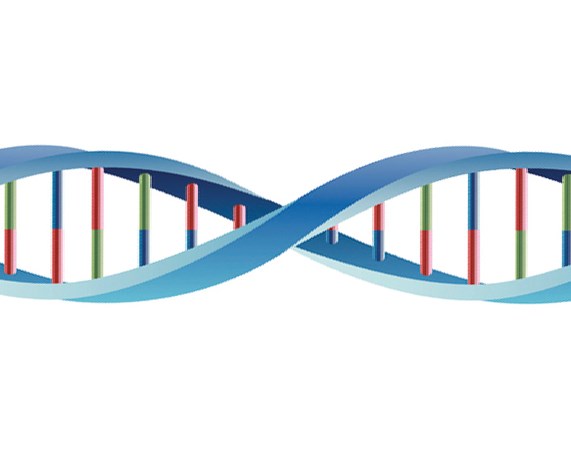Big Bang Theory
Summary of task
Students were asked to create a scientific report to explain the evidence that supports the Big Bang theory for the evolution of the universe. Students were asked to address the following questions and discuss the key scientific ideas relating to:
1) What is the Big Bang theory?
2) What is red shift?
3) What is Cosmic Background Microwave Radiation
4) How do they provide evidence for the Big Bang theory?
5) Does the evidence, in the student’s eyes, support the Big Bang theory?
The task was given at the end of a teaching and learning unit on 'The Mysterious Universe' where students investigated the empirical evidence that has enabled scientists to refine previous theories and present the most commonly accepted theory of 'the Big Bang'. Students were made aware of the fact that the Big Bang theory does not provide any explanation for the initial conditions of the universe, but rather describes and explains the general evolution of the universe going forward from a ‘singularity’. Students had learnt that, in this context, the term singularity designates a hypothetical initial state of the universe when there was no time and space and all that existed was energy concentrated in a single point.








